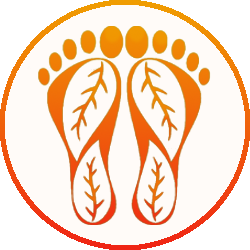What is Reiki?
“As running water smooths the jagged edges of a rock until it is small enough to roll away, Reiki flows to the areas of need, soothing and supporting the body’s natural ability to heal itself”
Reiki is a Japanese technique for stress reduction and relaxation that also promotes healing. It is administered by “laying on hands” and is based on the idea that an unseen “life force energy” flows through us and is what causes us to be alive. So Reiki is actually “spiritually guided life force energy.”
Reiki is a therapy often described as palm healing or hands-on-body healing in which a practitioner places hands lightly on or over a patient’s body to facilitate the patient’s process of healing. Reiki combines the Japanese and Chinese word-characters of “rei” (spiritual or supernatural) and “ki” (vital energy) Life force flows within the physical body though pathways called chakras, meridians and nadis. It also flows around us in a field of energy called the aura. Reiki heals by flowing through the affected parts of the energy field and charging them with positive energy.
By placing their hands on or over their subject, they are able to correct imbalances and unblock blocked energy. Reiki, Therapeutic Touch, Chakra Balancing, and Polarity Therapy are all various forms of energy work. Practitioners of energy work claim to be able to feel a human energy field with their hands. This ancient Japanese method of healing uses energy to balance the body and mind, and its benefits can be felt by both Reiki practitioners and their clients. In fact, Reiki is believed to improve just about any aspect of life, from physical health to emotional well-being to stress reduction and mental clarity.
Each position is held for three to ten minutes depending on how much Reiki the client needs at each position. The whole treatment usually lasts between 45 and 90 minutes.
The method of receiving Reiki is simple. The recipient remains clothed and lies on a couch or sits on a chair and relaxes. The practitioner gently places their hands in a series of non-intrusive positions on or near the body. There is no massage or manipulation. The whole person is treated rather than specific areas. Sessions can take 45 minutes to an hour-and-a-half, depending on the client’s needs.
Reiki practitioners are not trained in diagnosis and will not predict any specific outcome from treatment. If people are concerned about their symptoms they should see a doctor.
What do Reiki treatments feel like?
Each person experiences Reiki differently depending on their individual needs at the time. Clients may or may not feel sensations during a Reiki treatment. Benefits reported by recipients include deep relaxation promoting a calm, peaceful sense of well being on all levels. Some people feel sensations of heat, tingling, or experience seeing colours, whilst others can have an emotional response, indicating that shifts are taking place, allowing harmony to be restored.
Reiki is a safe and soothing treatment that can be:
Comforting when life is tough
The relaxing nature of Reiki can be very helpful to people especially at difficult times in our lives. We can all feel overwhelmed or disconnected, sometimes there is a real sense of isolation, both emotionally and spiritually. Reiki treatments can bring feelings of peace, contentedness and an ability to cope better with the challenges of life.
Reiki can be beneficial in circumstances that are short term, but can also support people dealing with long-standing conditions, helping to bring comfort, acceptance and a more positive outlook.
Supportive during pregnancy
Reiki can be wonderful for pregnant women. Treatments can be very relaxing and enjoyable for the mother.
Calming for children
Children usually love Reiki. The length of a session is often shorter than it would be for an adult.
Helpful at the end of life
In such cases Reiki can be a great comfort, helping to promote a sense of peace and acceptance for the dying and their families.
How much Reiki would I need?
A single session may be sufficient, but it is best to discuss this with your practitioner. For instance, if you have long standing emotional or spiritual issues, a series of sessions may be beneficial. In general if you find that helpful changes are taking place, it is a good idea to continue treatment.
Contra-indications
There are no known contra-indications for Reiki. It is a non-intrusive treatment that can be delivered in a variety of settings and requires no special equipment.


